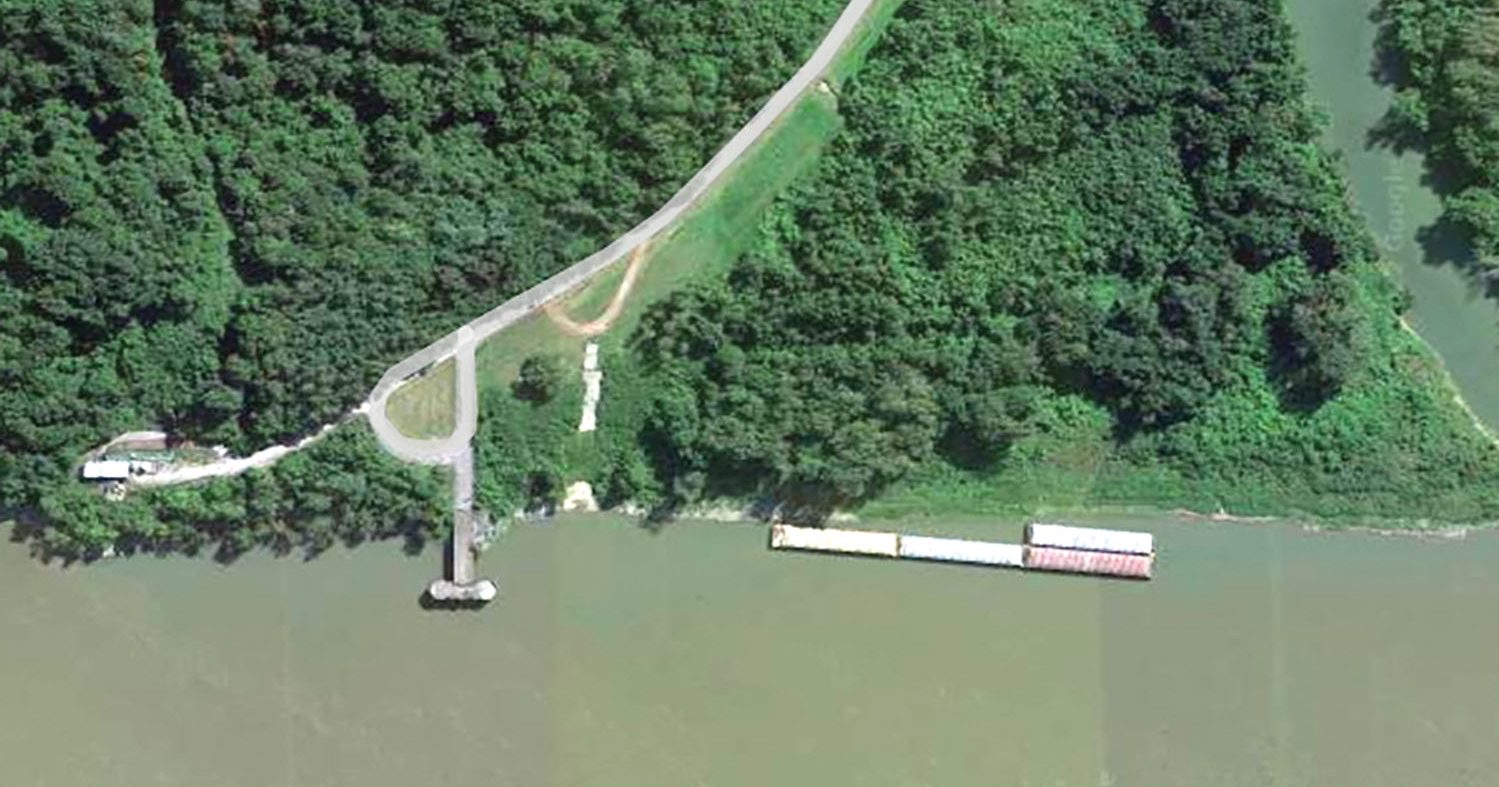A recommendation for a $300,000 state grant is helping to bring the Western Kentucky Riverport Authority a step closer building a riverport just south of the confluence of the Mississippi and Ohio rivers.
The port authority board has a public-private partnership agreement on 69 acres of land at Lower Mississippi Mile 950.2, with roughly 2,000 feet of riverfront and two mooring cells owned by the adjacent Phoenix Paper mill. The site is just upstream from where Mayfield Creek flows into the Mississippi.
Four far western Kentucky counties are partnering on the project in Wickliffe, Ky. A formal lease agreement with Phoenix Paper will be sought once plans are further developed.
Plans for an initial phase of the project call for the development of an in-stream port on 19 acres, divided into a 12-acre segment and a 5-acre segment. The port authority would, ideally, like to find one tenant for the 12-acre segment and divide the 5-acre portion into five, 1-acre tracts for smaller businesses, said Hannah Chretien, executive director of the Ballard County Economic Development and Industrial Board.
She said the developers have been working closely with existing river-related businesses to understand the property’s potential uses and to make sure the port does not in any way interfere with neighboring businesses.
David Rambo, chairman of the riverport authority’s board, said the board was notified February 24 that the site has been recommended by a site selection group to receive a $300,000 Kentucky Product Development Initiative (KDPI) grant, which requires a dollar-for-dollar local match. Next steps include verifying the accuracy of all information needed to meet the grant requirements before funding can be disbursed.
“We’ve got a lot of planning and preparatory work, so we’ll be working on due-diligence and pre-construction activities on the site,” Chretien said of what the grant will help to accomplish.
Both Ballard and Carlisle counties have contributed some funding for the required local match, and the board is approaching the other counties’ economic development groups for funding as well as speaking to some potential private investors, Rambo said.
“We feel confident we’ll be able to achieve that match,” he said.
Rambo believes the port could be useful for agricultural purposes or for the transloading of various bulk materials and minerals, including clay.
“We’ve got several businesses that are very interested in doing that,” he said of bulk materials transloading.
The KDPI grant will allow continued archaeological and environmental studies, especially important since there is evidence of the remains of Fort Jefferson on a portion of the site, Rambo said. Chretien added that the port authority is working closely with state historic preservation officials to address any issues concerning the fort’s location while still moving forward with the port project.
Gen. George Rogers Clark erected Fort Jefferson in 1779 near the confluence to consolidate his forces and control access to the Ohio River, according to historical documents. The original fort was burned down by Chickasaw forces two years later.
In addition to finalizing the KIDP grant, the port authority is also seeking federal funding through a federal Port Infrastructure Development Program (PIDP) grant that could allow road construction into the site as well as bringing utilities to it and some initial dirt work that would raise some low spots above the level of the 100-year floodplain.
The port authority has hired GEO Consultants of Kevil, Ky., which is partnering with HDR Inc., an engineering firm with an office in nearby Paducah, Ky., to prepare the PIDP grant application.
Rambo noted that the port authority was a finalist for a PIDP grant in 2022 and hired the firms after meeting with federal officials last year to determine how to make an even stronger application this year.
Chretien noted that that site had also previously received $100,000 in funds from the U.S. Department of Agriculture and the Delta Regional Authority for an economic feasibility study and initial environmental and archaeological studies, but that the KDPI grant was the largest funding announcement to date.
Rambo said it has taken time, but he is hopeful for the future of the site as a port project benefitting the region’s economy.
“We’ve been working at this for over five years to get it to this point, and we’ve still got a lot of work left to do,” he said. “In today’s times these things take a lot of effort, a lot of time, but we believe it’s a valuable asset to have that river there and to have this location.”
Caption for photo: The Western Kentucky Riverport Authority has received notice it has been recommended for a $300,000 state grant for planning a riverport at a greenfield site just south of the confluence of the Mississippi and Ohio rivers. The site is adjacent to the Phoenix Paper mill in Wickliffe, Ky. (Photo courtesy of the Western Kentucky Riverport Authority)



